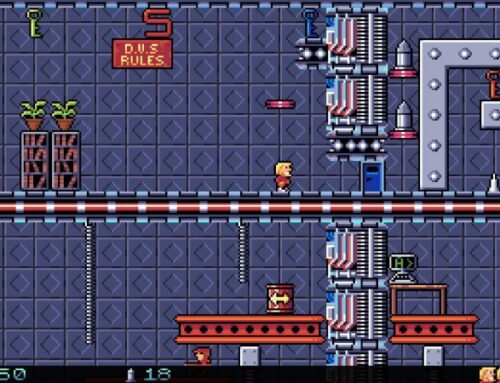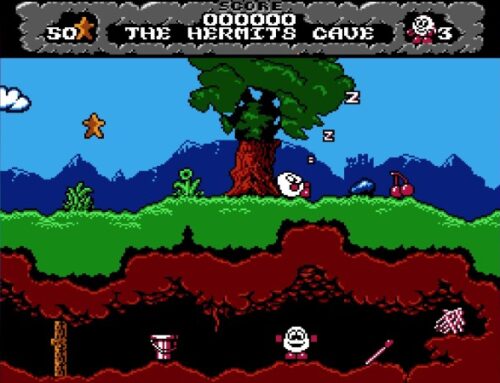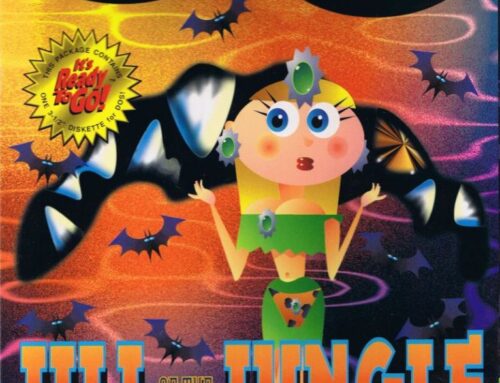The upcoming Intellivision Amico is, it’s fair to say, still a bit of an unknown quantity. While the idea behind it it sound — the idea of a console that focuses specifically on people getting together in the same room to enjoy games together worked very well for everything from the good ol’ Atari 2600 right up to Nintendo’s Wii and Switch platforms — we’re still yet to see the console in its final form. And the project seems continually surrounded by absolutely baffling decisions.
For many, red flags were raised when marketing material for the Intellivision Amico promised some sort of new approach to physical game releases — it would have to be some sort of new approach, since the Amico, as we had seen it up until that point, had no discernible place to put a game cartridge or disc. But what could it be?

A few weeks back, we got the answer: Intellivision Amico “physical products”, as they are typically referred to, are not really physical releases of video games at all. Instead, you get a cardboard box fashioned after the original Intellivision’s packaging, and inside you get a lenticular art card, a collectible coin featuring a design inspired by the game, and an RFID card that you will be able to tap onto your Intellivision Amico in order to download the game in question.
Let’s be clear on that: the “game card” that you get in these physical releases doesn’t actually contain the game at all; instead, it acts as a means of unlocking access to a digital download of the game without having to go through an online digital storefront or enter a redemption code.
That’s not all, though; the version of the digital game that you can redeem by tapping the card on your Intellivision Amico is distributed as a “non-fungible token”, better known as an NFT. In simple terms, this means that a record of your ownership of that specific copy of the game is stored on a network of computers known as a “blockchain”. In practice, this means that you can transfer ownership of that copy of the game temporarily or permanently simply by tapping the card on a different Intellivision Amico console.

For example, this means that you can loan an Intellivision Amico game card to a friend and, while they’re playing it, you will be unable to access it — just like if you’d loaned them a cartridge for the original Intellivision console, or indeed any sort of physical media for any of the consoles that have accepted it from throughout history. The difference is, let’s reiterate, the physical object you’re loaning them doesn’t have any inherent value in and of itself; it’s simply a key to access digital content.
On the one hand, Intellivision Amico’s approach to this peculiar hybrid of physical and digital games answers a question that has been troubling consumers and digital storefronts ever since digitally downloadable games became a thing. What if you’ve bought a digital video game and, for one reason or another, don’t want it any more? How can you return it, give it to a friend, or perhaps trade it in against something new, like you can do with a boxed release of something?
The answer to that question up until now has always been “well, you can’t” — though the fairly generous refund policy that Steam introduced a while back helps counteract a certain amount of digital buyers’ remorse if nothing else. Intellivision Amico’s use of NFT technology is one means of resolving the issue — but it’s an approach with plenty of drawbacks.

Most significantly, the use of NFTs as a means of tracking digital ownership is still a relatively unproven technology, not helped along by the fact that its applications to date have been… questionable at best. The vast majority of NFTs seen today take the form of computer-generated images that some people have inexplicably decided are “collectible” and “valuable” — to the tune of thousands of dollars in some cases — despite them having no actual worth; indeed, a common joke among NFT critics is that one can simply right-click and save an NFT image and get exactly the same experience for free without paying through the nose.
As a result, it’s not at all uncommon for people to look on NFTs as some sort of attempt at scam marketing — not helped along by the fact that cryptocurrency and blockchain technology in general is still broadly mistrusted by a lot of people online. Part of this is down to the worryingly uncritical zealotry that crypto and NFT enthusiasts demonstrate when defending their financial interests, but there are also significant environmental concerns over the use of this technology.
Since blockchain is a technology that works through a vast network of computers, it is notoriously energy-intensive, meaning that although NFTs might seem like a logical method of tracking digital ownership from a technological standpoint — particularly if the NFT in question actually has value beyond being an ugly Twitter avatar — they’re certainly not an efficient way of handling it.

One might question why blockchain needs to get involved at all, when all that really needs to happen when that Intellivision Amico game card gets tapped on an Intellivision Amico console is for the Intellivision Amico servers to check whether or not that code has been used before, and if so, prompt the user if they want to transfer ownership from the previous owner’s account to the new owner. That’s something that is absolutely possible to do right now without blockchain, though digital storefronts have, to date, been hesitant to implement something along these lines out of fear of it being misused and exploited for piracy.
But let’s not get hung up too much on the technology; regardless of your own feelings on NFTs, that’s the route that the Intellivision Amico team has decided to go down, so that’s what we’re stuck with for the moment. Instead, let’s contemplate the part of the equation that is likely to be most significant to retro enthusiasts: the supposedly “collectible” aspect.
To some game collectors, collecting video games is simply about the “having”. These are the people who pick up “graded” games for exorbitant amounts of money, never take them out of those horrible plastic boxes, never play the games in question and see their collection as an “investment” rather than a hobby. Not to put too fine a point on it, but fuck those guys.

Instead, the truly passionate retro enthusiasts pick up games that they want to play — that they’ve been curious about trying, or which they have nostalgia for. And the appeal of classic retro consoles is that, in most cases, you can simply grab a piece of physical media, stick it in the system it’s designed for and the game will just work.
The likelihood of it “just working” starts to decline once we get into disc-based platforms — and indeed home computer systems that use floppy disks and cassette tapes face similar issues — but for the most part, when it comes to any platform up to and including the Xbox, GameCube and PlayStation 2 era, if you buy a game, you can play it.
As soon as the digital sphere enters the picture at all — whether it be simply for post-release patches and updates for a disc-based release or something along the lines of what the Intellivision Amico is doing — the physical release loses a lot of its value as a collectible in the long term.
For a recent example, consider Final Fantasy XV on PlayStation 4 and Xbox One; unpatched, straight off the disc, this is a buggy mess that is barely playable. Not only did the downloadable updates fix the issues the copy on the disc had, they also added a significant amount of new features to the game. Right now, that’s not an issue, since if you pop the disc into a PlayStation 4 or Xbox One, the game will just download the relevant update.

But what happens in twenty or thirty years’ time? This isn’t an unreasonable question, given that today we’re still playing games from up to 40 years ago in some cases — often on their original hardware as well as through emulation and modern rereleases.
Can we still reasonably expect Sony and Microsoft to keep the servers up and running, serving updates and patches for games that are several decades old at that point? Because if they don’t, that physical copy of Final Fantasy XV becomes next to useless in the future — but at least you can still play it. Kind of.
We face a more serious issue with these Intellivision Amico releases. The fact that the Intellivision Amico game cards don’t contain the actual game data at all and instead simply act as a digital unlock key mean that if and when the Intellvision Amico online servers are taken offline, you won’t even be able to play an unpatched version of the game. That game is just gone, and all you’re left with is a few bits of tat in a cardboard box that have no practical function whatsoever.
Is that really something we want to be encouraging for a platform that is primarily hoping to capitalise on nostalgia? I think not — but since the console itself isn’t even out yet at the time of writing, I suspect it’s going to be a few years before we really get to see what a colossal mistake this all seems to be.




